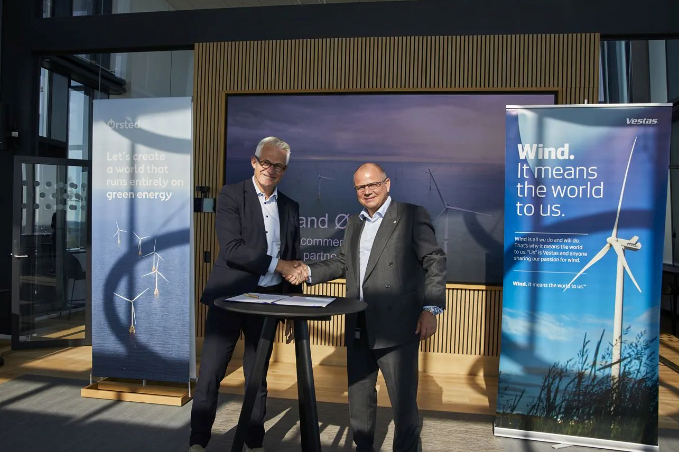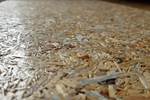Ørsted, Vestas partnership commits to net-zero wind farms
Procurement and installation of low-carbon steel towers, and upscaling of Vestas’ composite blade recycling process, aims to engage ongoing demand and solutions for these technologies in the wind industry.

Photo Credit: Ørsted
Renewable energy companies Ørsted (Fredericia, Denmark) and Vestas (Aarhus) are announcing a commercial sustainability partnership. Ørsted will procure low-carbon steel wind turbine towers and blades made from recycled composite materials from Vestas in all joint offshore wind projects.
The deployment of offshore wind is crucial to address the most critical decarbonization and circularity challenges. Committing to integrate sustainable procurement not just as a one-off but in all future offshore projects between the two companies, is reportedly creating ongoing demand and solutions in the wind industry.
“The energy transition requires unprecedented scale and pace, and we need strong partnerships between leading companies and industries to succeed,” Henrik Andersen, CEO of Vestas, says. “We are excited to partner with Ørsted to expedite the deployment of our cutting-edge circular blade recycling technology and foster the demand for low-carbon steel in the wind industry’s supply chain. This partnership is a leap forward for developing circular wind power projects and sends a powerful message that commercial agreements and collaboration are vital in our urgent fight against the climate crisis.”
The partnership entails that for all joint future offshore wind farms, the two companies will:
- Procure and install a minimum of 25% low-carbon steel towers in joint projects.
Over the last years, Vestas has spearheaded cross-industrial collaboration to establish availability of low-carbon steel for wind turbine towers. With the new partnership, Ørsted and Vestas are sending a strong demand signal to the steel industry to further accelerate the scaling of cost-competitive decarbonized steel for offshore wind. By using scrap steel manufactured with on-site renewable electricity, carbon emissions from heavy steel plates used in towers can be reduced by up to 70%.
- Scale circular blade recycling technology and procure blades made from recycled materials.
Vestas and its partners in the CETEC project have pioneered a solution to break down composite materials in existing and future epoxy-based blades, and use the recovered epoxy resin for new blades. Vestas is currently scaling up the circular recycling value chain together with its partners Olin and Stena Recycling. When ready for commercial manufacturing, Ørsted will procure wind turbines blades made from recycled materials from Vestas to further accelerate the scaling of the technology.
Apart from these commitments, the companies have also pledged to explore other areas of collaboration within sustainability, including within biodiversity to ensure a build-out of renewable energy in balance with nature.
Related Content
-
Thermoplastic composites welding advances for more sustainable airframes
Multiple demonstrators help various welding technologies approach TRL 6 in the quest for lighter weight, lower cost.
-
Recycling end-of-life composite parts: New methods, markets
From infrastructure solutions to consumer products, Polish recycler Anmet and Netherlands-based researchers are developing new methods for repurposing wind turbine blades and other composite parts.
-
Novel dry tape for liquid molded composites
MTorres seeks to enable next-gen aircraft and open new markets for composites with low-cost, high-permeability tapes and versatile, high-speed production lines.
















